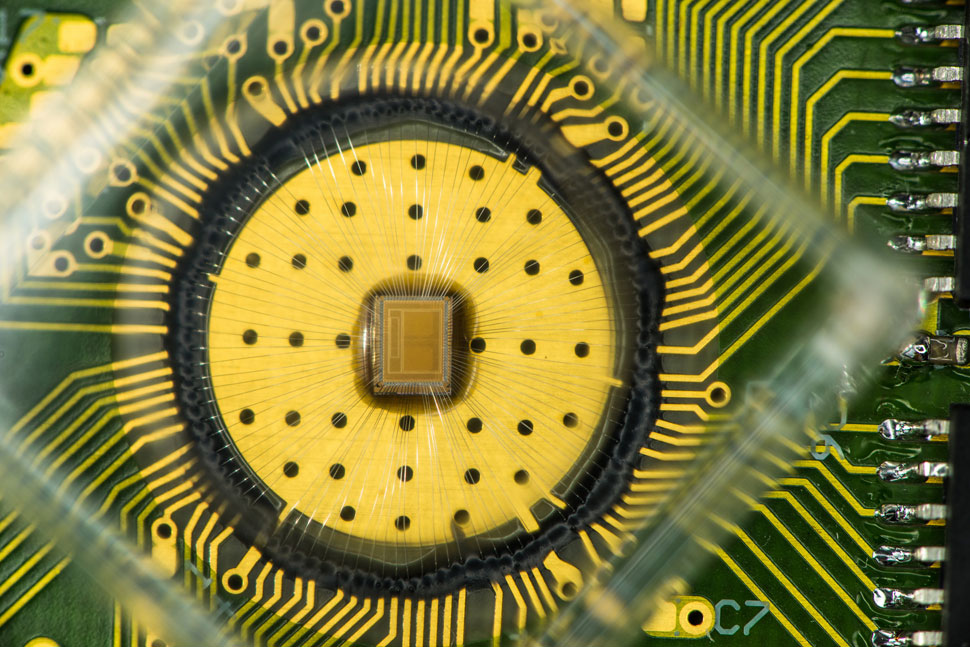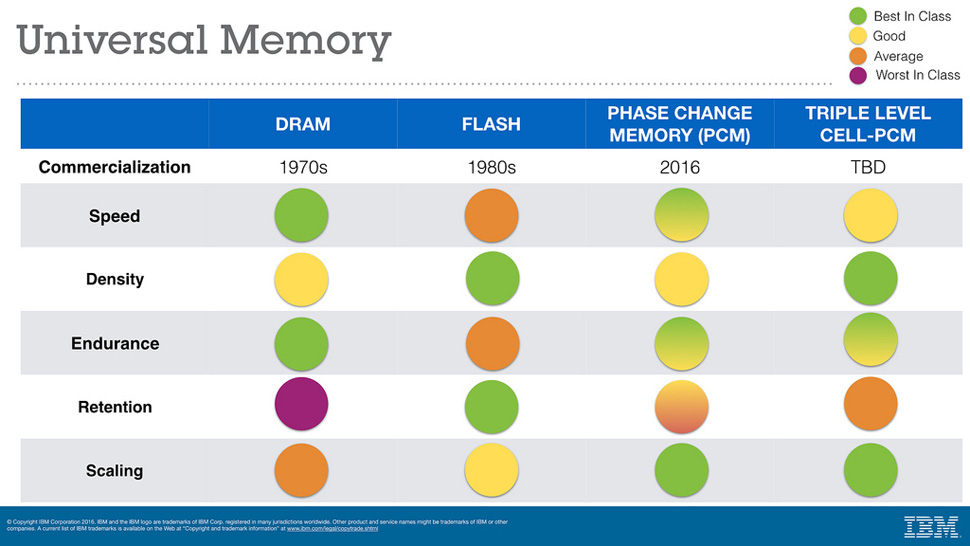
17th May 2016 IBM scientists achieve storage memory breakthrough A new technology developed at IBM can speed up machine learning and access to the Internet of Things, mobile phone apps and cloud storage.
For the first time, scientists at IBM Research have demonstrated reliably storing 3 bits of data per cell, using a relatively new technology known as phase-change memory (PCM). The current memory landscape spans from venerable DRAM to hard disk drives to ubiquitous flash. But in the last several years, PCM has attracted the industry's attention as a potential "universal" memory technology, based on its combination of read/write speed, endurance, non-volatility and density. For example, PCM won't lose data when powered off (unlike DRAM), and endures at least 10 million write cycles, compared to an average flash USB stick, which tops out at 3,000 write cycles. This research breakthrough provides fast and easy storage to capture the exponential growth of data from mobile devices and the Internet of Things. Along with standalone PCM, hybrid applications could be possible, which combine PCM and flash storage together, with PCM as an extremely fast cache. For example, a mobile phone's operating system could be stored in PCM, enabling the phone to launch in a few seconds. For enterprise-level systems, entire databases could be stored in PCM for blazing fast query processing of time-critical online applications, such as financial transactions. In addition, machine learning algorithms using big datasets would see a speed boost by reducing the latency overhead when reading data between iterations.
PCM materials exhibit two stable states – the amorphous (without a clearly defined structure) and the crystalline (with structure) phases, of low and high electrical conductivity, respectively. To store a '0' or a '1', known as bits, on a PCM cell, a high or medium electrical current is applied to the material. A '0' can be programmed to be written in the amorphous phase or a '1' in the crystalline phase, or vice versa. Then to read the bit back, a low voltage is applied. Previously, scientists at IBM and other institutes have demonstrated the ability to store 1 bit per cell in PCM, but today at the IEEE International Memory Workshop in Paris, IBM scientists presented, for the first time, successfully storing 3 bits per cell in a 64k-cell array, at elevated temperatures and after a million endurance cycles. To achieve multi-bit storage, the researchers developed two innovative enabling technologies: a set of drift-immune cell-state metrics and drift-tolerant coding and detection schemes. "Phase change memory is the first instantiation of a universal memory with properties of both DRAM and flash, thus answering one of the grand challenges of our industry," said Dr. Haris Pozidis, manager of non-volatile memory research at IBM. "Reaching 3 bits per cell is a significant milestone, because at this density the cost of PCM will be significantly less than DRAM and closer to flash."
---
Comments »
|








